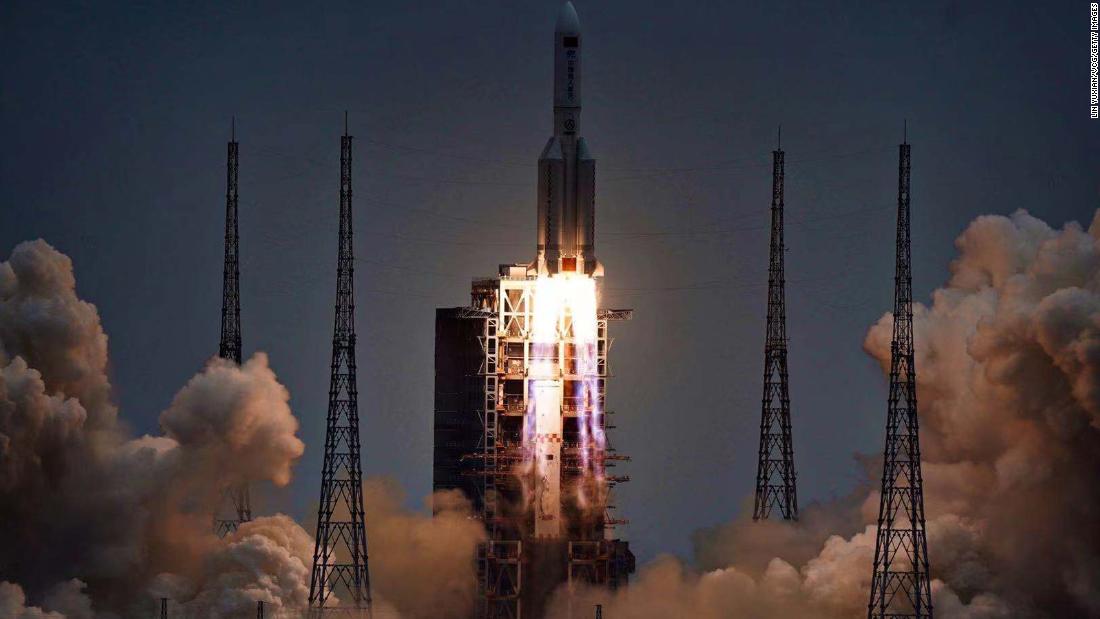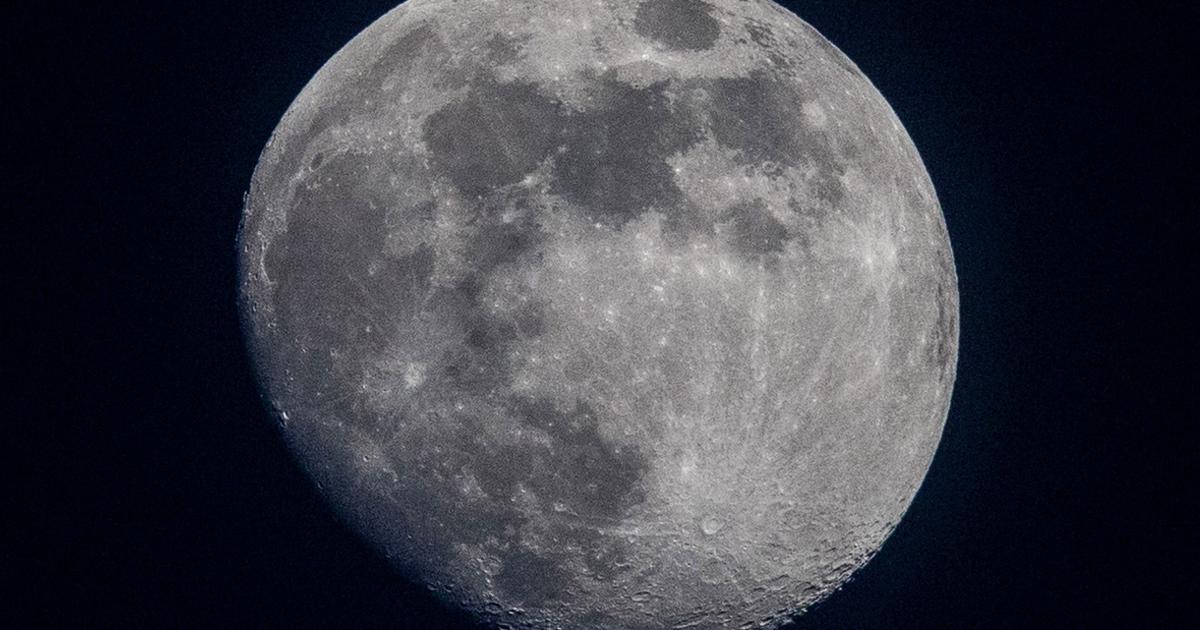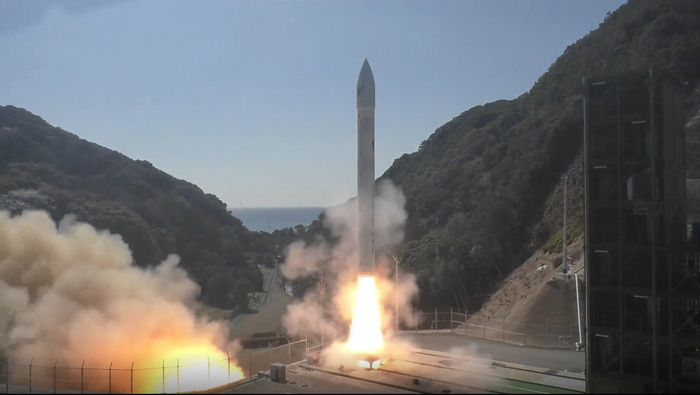First image of Mars from China's 1:04 space mission
(CNN) -
For more than two decades, the International Space Station (ISS) has orbited 420 kilometers above Earth, welcoming more than 200 astronauts from 19 different countries.
But its role as the only place of continuous human presence in space, scientific research and testing ground for future space exploration is days old, which could spell the end of an unprecedented era of international space cooperation.
China, whose astronauts have long been excluded from the ISS, successfully launched the first module of its planned space station - Thursday morning - from the Wenchang launch center on the southern island of Hainan, according to the National Space Administration. China.
China and Russia reach an agreement to build a joint lunar space station
The core module, currently the largest spacecraft developed by China, was launched into low-Earth orbit by a Long March-5B rocket, marking the first step in the Asian country's efforts to build its own station in the next two years. .
Related to this issue, Russia also said that it will abandon the ISS project in 2025 and that it plans to build its own space station, which could be launched in 2030, if Russian President Vladimir Putin gives the go-ahead.
advertising
China space station
Incredible images of Mars sent by Chinese mission 0:47
The Chinese space station will not be launched complete in one go, but will be assembled from several modules that will be sent at different times.
Chinese state media reports that the country's space station will be fully operational by the end of 2022.
The core module has a total length of 16.6 meters, a maximum diameter of 4.2 meters and a living space of 50 cubic meters, according to the China Aerospace Science and Technology Corporation (
CASC
).
It is expected to operate for 10 years, which could be extended to 15. In the next two years, eleven launches are planned, including four crewed and four cargo missions.
In addition, the first manned mission will launch in June this year, sending three astronauts into orbit for approximately three months, in which the life support system and maintenance will be tested.
Differences with the International Space Station
It will not be as large as the ISS - one-fifth the size and similar to the Russian Mir space station, which operated from 1986 to 2001 - but the intention is that it can be permanently occupied by astronauts on long-term stays.
"We do not intend to compete with the ISS in terms of scale," said Gu Yidong, chief scientist of the China Manned Space Program, who was quoted by Scientific American.
China launched its first manned space flight in 2003, more than 40 years after NASA.
But, as the nation has grown richer and more powerful in recent decades, its space program accelerated.
Projects for the Chinese space station
The Chinese space station - the central module is known as Tianhe, which means harmony of the heavens - will allocate space and resources to a series of international experiments in microgravity.
So far, six projects have already been accepted, including one on the impact of space flight on cancerous tumors, which will be carried out by researchers from Norway, the Netherlands, Belgium and France.
"China is interested in demonstrating to the world, and to its own people, that it is a leading player in the field of manned spaceflight and cutting-edge science," said David Burbach, Professor of National Security Affairs at the US Naval. War College.
Burbach spoke in a personal capacity, not on behalf of the US Navy.
They discover the most distant cosmic jet at 13,000 million light years
“International cooperation also helps China's scientific community learn from its peers in other nations.
From a diplomatic point of view, scientific cooperation helps to present China as a normal and cooperative world power;
And, in the case of cooperation with US allies in Europe and elsewhere, Beijing is likely to appreciate driving a wedge between those allies and the United States.
There has been very little cooperation between the US and China in space.
In 2011, the US Congress passed a law to prohibit NASA from any bilateral contact with individuals in the Chinese space program over national security fears.
What's next for the International Space Station?
Ingenuity stars in the image of the week on Mars 0:34
It is not clear what awaits the increasingly ancient ISS.
Initially, the ISS was expected to have a useful life of 30 years.
NASA has said that the space station is viable beyond 2028 and that it could continue to play a key role in preparing for deeper space flights, such as missions to Mars.
However, NASA wants to share the $ 1.1 billion annual cost of its operation with other potential users.
“The hope is to commercialize the station, but it is not clear that much progress has been made on the issue or even what commercialization would mean in practice.
The ISS probably does not have the equipment to be a hotel for space tourists, and it is not known if there is much commercial interest in using the ISS for research and development in zero gravity, "Burbach said.
'In theory, the lack of a buyer, so to speak, could mean abandoning the ISS and putting it into orbit, leaving it to burn out like Mir station twenty years ago.
I think it will be very difficult politically for the US to abandon a permanent presence in Earth orbit when China has its own station, "he added by email.
The US priority
Likewise, Burbach stated that the ISS has been much more international than any other space project, with the close participation of Russia, Japan, Canada and European countries.
However, cooperation between the US and Russia is unlikely to be the cornerstone of future projects, he said.
Nor does he expect the United States' stance on collaboration with China in space to soften.
The Perseverance rover produced oxygen on Mars
“The United States is making its return to the moon program - Artemis - very international.
The European Space Agency, Canada and Japan contribute important components, and the US also involves new partners such as the United Arab Emirates, ”said Burbach.
"The general issue is for the United States to strengthen relations with its allies, not the use of space to try to build a bridge with its rivals," he added.
ChinaSpaceSpace Station



/cloudfront-eu-central-1.images.arcpublishing.com/prisa/ZLW56GYGEBEJLPNDSNPUK2NJZE.jpg)










